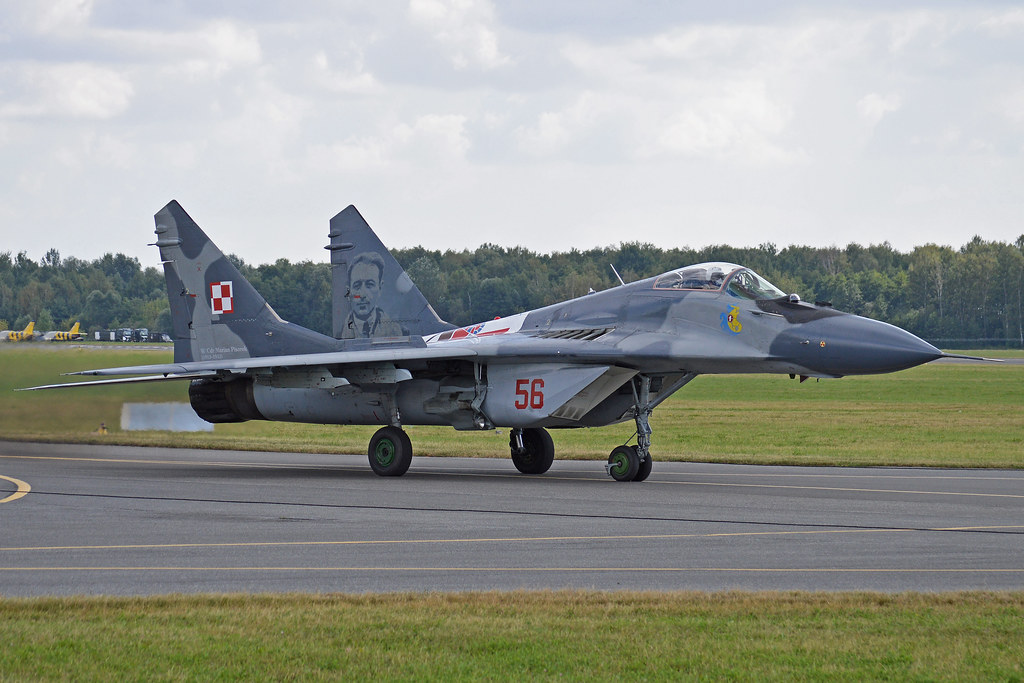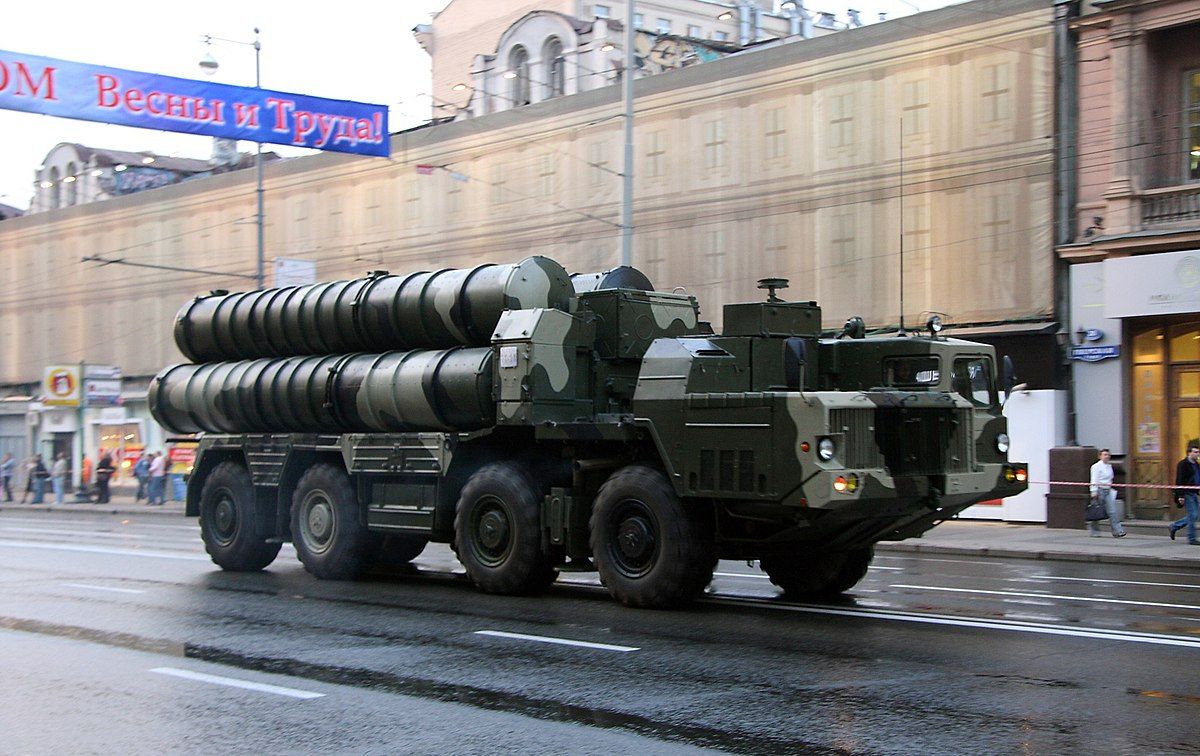Revisiting Jets for Ukraine: A Now Feasible Option?

In March 2022, the Polish government proposed a deal to the United States to exchange many of its Soviet-Era warplanes for more modern American counterparts, with the Soviet platforms being donated to Ukraine’s war effort against Russia. It was quickly dismissed due to American fears of escalating tensions as well as the dicey efforts of transporting such aircraft to Ukraine. Ten months have passed since, and the conflict has evolved in numerous ways–Ukraine has gained a substantial amount of territory it previously lost, and Western aid has improved with game-changing weapons like the High-Mobility Artillery Rocket System (HIMARS), which under current aid packages, can precisely hit tanks, ammo depots and other targets from a range of about 50 miles. With these new developments, the feasibility of donating Soviet-era warplanes to Ukraine has dramatically improved, though there still exist some complications. Nevertheless, this article will focus on the ways in which donating these platforms has–and has not–become more favorable.
Supply and Demand
Since the beginning of the war in late February, Russia has gone on the offensive against the Ukrainian Air Force (UAF), relentlessly targeting anything that flies as well as numerous airfields. Since we can assume there is an adequate supply of aircraft to give to Ukraine, given that some nations like Poland and Slovakia have been willing to do the aforementioned exchange, this raises a couple questions about the Ukrainians’ need for aircraft. First, how many aircraft have they lost? And second, how many aircraft can they feasibly replace?
To answer the first question, Russian propaganda outlet TASS has claimed that Russia has completely destroyed the UAF (Venckunas). In actuality, this is not true, though the UAF has sustained heavy losses. According to Forbes, the UAF began the war with about 125 jet fighters and bombers, and, as of last month, they have officially lost 51 fighters and 18 helicopters, which accounts for about 40% of the total flying force (Axe). This has been partially mitigated by the flow of spare parts from the West as well as the capturing of airfields from Russian hands, but the current rate of losses are still unsustainable.This means that Ukraine has a legitimate stake in gaining more aircraft.
The second question is more complicated. Even if the aircraft get replaced, could the Ukrainians still fly them? Let’s take a look at two factors that would influence whether Ukrainians could operate their replacement aircraft–the status of airfields and pilot training. Airfields are undoubtedly important for air operations because they are places where planes are stored, maintained, and sent off for missions. Currently, it is impossible to know exactly how operational Ukrainian airfields are, meaning that they can store, launch, and repair planes to their desired effect. The conflict is still raging and information about it is typically kept secret. However, we can get an idea as to how active Ukrainian airfields are based on current UAF activity, as it is difficult for air activity to take place if the aircraft can’t go back to an airfield. From an Aerotime article in late August, numerous pieces of photographic evidence of Ukrainian aircraft performing sorties (missions) have emerged after a Russian news agency declared the UAF completely destroyed (Venckunas). Given that there are still planes in the air, the presence of operational airfields, and the likely openings in space due to a loss of 40% of the UAF’s aircraft, the capacity to receive new aircraft still exists.
Pilot status and training seems to be the larger issue at hand. Since the UAF has lost at least 51 piloted aircraft, it has undoubtedly lost valuable pilots too. While the exact numbers or estimates are difficult to pinpoint given Ukraine’s withholding of casualty numbers and the various combat situations in which a pilot can get shot down, sources like Forbes assert that the pilot losses are at an “unsustainable rate” (Axe). This is likely true, as hundreds to thousands of flight hours are needed to train pilots effectively, and training is just about impossible given that all the skies over Ukraine are subject to fighting. In effect, the loss of pilots mitigates how many aircraft can actually be used effectively, even though many aircraft can be donated.

To summarize, the UAF has a legitimate need to bring in more aircraft, especially jet fighters and bombers. Even though there are other countries more than willing to hand over the desired aircraft, Ukraine may not be able to use all of them effectively due to various factors like the current loss of pilots and some airfields. Nevertheless, from face value it seems more than appropriate to give Ukraine these aircraft systems.
Political Risks and Escalation
Even though it militarily makes sense to deliver jet fighters and bombers to Ukraine, the real challenges with this delivery are political. When two sides fight in a grueling war, any contribution from outside forces to one side can result in retaliation from the other. The war in Ukraine is no exception–Russia has attempted to antagonize the West for giving aid to Ukraine since the beginning of the war. In March, an NBC News article by Alex Seitz-Wald outlined the primary reason for why the Pentagon was opposed to Poland’s original deal:
Countries sell or give away new and used military defense equipment to foreign countries all the time — the State Department oversees $55 billion a year in sales — and it’s typically the responsibility of the buyer to go pick it up. But Western officials worry that if Ukrainian pilots go to a NATO country to pick up fighter jets and then fly them back into contested Ukrainian airspace, where they might have to engage with Russian fighters, Moscow will view the country they left from as a combatant and therefore fair game.
The challenge presented by delivering the aircraft is still very real today. However, there exist several workarounds that would make such a delivery doable. One option, as the article discusses, would be to either disassemble and reassemble the airframes before and after transfer or deliver them over land. While this could yield logistical complications, it is more than within the range of possibility, given that the U.S. has already dedicated tens of billions of dollars to Ukraine’s war and humanitarian effort. Another option could be to fly the aircraft low and quickly over the border, landing in western Ukrainian airbases. This method could avoid detection from the Russian Air Force because low-level flying confuses enemy radars due to the planes’ proximity to terrain features like hills and buildings, and Russian forces do not hold territory close enough to western Ukrainian airfields to target these planes with shorter-range systems like antiaircraft guns and man-portable air defense systems (MANPADS). This option would be less logistically complicated, but it could be riskier than the first option due to the planes still flying into contested airspace and the increased possibility of collisions with terrain. Regardless, there exists at least two options to transfer aircraft to Ukraine without triggering a provocation from Russia.
Another risk with donating the aircraft is the nature of giving the aircraft themselves. Once in the air, jet fighters and bombers, like the MiG-29 or the Su-25, can launch attacks on Russian targets far behind enemy lines, or if they wanted to, within Russia itself. This is another concern the U.S. currently has regarding weapon donations to Ukraine–they do not want to see the weapons they donate used to strike Russia itself and stir additional escalation. This was certainly the case with the HIMARS donation to Ukraine: according to The Wall Street Journal, even though the Ukrainians were instructed to not hit targets in Russia with HIMARS, the Americans modified the weapons platforms anyway so they could not fire rocket variants that could strike deep into Russia, whether it was American 300-kilometer range rockets or potentially Ukrainian, domestically-produced rockets (Gordon and Lubold). However, the Ukrainians have kept their word, not using the rocket platforms to hit targets within Russia and instead using them to batter logistical lines responsible for successes in Kharkiv and Kherson. Even though they had the ability to strike into Russia with the partially-restricted HIMARS they were given, Ukraine has demonstrated in this case that it can be trusted with weapons given from the West. Shifting the discussion back to jet warplanes, this same doctrine could be applied to mitigate Western concerns of further escalation, making the concept a more viable option.
Overall, the political challenges resulting from a donation of weapons platforms remains largely the same, though it has eased. Transferring the planes to Ukraine by air would be very politically risky due to the skies of Ukraine being contested, although this could be mitigated by ground delivery or low-level flying to avoid detection. Concerns about using supplied weapons to strike into Russia still exist, but restraint held by Ukrainian HIMARS commanders would help the U.S. trust Ukraine more in the use of any donated warplane.
Conclusion
Ukraine has a legitimate reason to acquire more aircraft for its depleted air force. Due to factors like pilot losses and airfield damage, the effectiveness of donated warplanes might not reach its full potential, but there still exists some capacity for the UAF to effectively use what it receives. Donating the planes themselves will possess a logistical and/or a political challenge, but it is doable, and the U.S. currently has more trust than it did ten months ago that Ukraine will promise to not use the warplanes to attack Russian territory itself, like that confirmed in an official commitment made by Ukrainian President Volodymyr Zelensky in order to secure the delivery of HIMARS (Gordon and Lubold). As a result, the prospect of donating planes to Ukraine seems to be a more viable option than it was ten months ago. However, it is up to the U.S. and Ukrainian governments to decide what kind of aid Ukraine would best utilize, whether that includes warplanes or not.
Works Cited
Axe, David. “The Russians Have Lost Nearly 300 Aircraft Over Ukraine—Mostly Drones.” Forbes, 7 Nov. 2022, www.forbes.com/sites/davidaxe/2022/11/07/the-russians-have-lost-nearly-300-aircraft-over-ukraine-mostly-drones/?sh=320e3ece1a65.
Gordon, Michael, and Gordon Lubold. “U.S. Altered Himars Rocket Launchers to Keep Ukraine From Firing Missiles Into Russia.” The Wall Street Journal, 5 Dec. 2022, www.wsj.com/articles/u-s-altered-himars-rocket-launchers-to-keep-ukraine-from-firing-missiles-into-russia-11670214338.
Seitz-Wald, Alex. “Why Did the U.S. Reject Poland’s Plan to Give Ukraine Its Soviet-era Fighter Jets?” NBC News, 10 Mar. 2022, www.nbcnews.com/politics/national-security/us-reject-polands-plan-give-ukraine-soviet-era-fighter-jets-rcna19396.
Venckunas, Valius. “Fact Check: Has Russia Destroyed the Ukrainian Air Force?” AeroTime, 31 Aug. 2022, www.aerotime.aero/articles/32040-fact-check-has-russia-destroyed-the-ukrainian-air-force.
Pictures:
Defense Visual Information Distribution Service. “A M142 High Mobility Artillery Rocket System (HIMARS) - NARA and DVIDS Public Domain Archive Public Domain Search.” NARA & DVIDS Public Domain Archive, 9 Dec. 2022, nara.getarchive.net/media/a-m142-high-mobility-artillery-rocket-system-himars-a7a66c. Accessed 2 Jan. 2023.
Kuzmin, Vitaly. “S-300 - 2009 Moscow Victory Day Parade (2).Jpg - Wikimedia Commons.” Wikimedia Commons, 28 Apr. 2009, commons.wikimedia.org/wiki/File:S-300_-_2009_Moscow_Victory_Day_Parade_(2).jpg. Accessed 2 Jan. 2023.
Wilson, Alan. “Mikoyan MiG-29A Fulcrum ‘56.’” Flickr, 24 Aug. 2013, www.flickr.com/photos/ajw1970/11982275634. Accessed 2 Jan. 2023.



